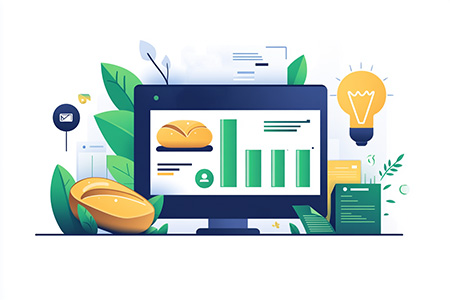Sarah's bakery was dying.
After five years serving the small town of Millfield, her once-bustling shop sat nearly empty most mornings. The financial crisis was six months away, and she knew it.
"I don't understand," she confided to her friend Michael over coffee one morning. "My pastries are better than ever. My prices are competitive. I've even started opening earlier."
Michael, who ran a successful marketing consultancy, studied the empty café tables. "You're looking at the problem backwards," he said. "You're thinking about your bakery. You need to be thinking about your customers."

That conversation sparked Sarah's journey into what would transform her business: customer insights.
"Insights aren't just information," Michael explained. "Information tells you what people do. Insights tell you why they do it."
Sarah was skeptical but desperate. "So what do I do? Hire expensive consultants? Run focus groups?"
Michael smiled. "No. You start by asking better questions."

Michael introduced Sarah to what he called "The Five Doorways to Understanding" – a simple framework for generating meaningful insights:
Doorway 1: The Real Issue
Sarah's first instinct was to ask: "How do I get more customers?" But Michael pushed her to dig deeper: "What's really changed in how people are approaching breakfast and morning routines in Millfield?"
This reframing led Sarah to observe the town, not just her shop. She noticed the new gym that had opened three blocks away, the increased commuter traffic heading to the city, and the popularity of the coffee chain at the edge of town.
Doorway 2: The Information Hunt
Instead of guessing, Sarah became a detective:
- She stood outside her shop at 7 AM, counting passersby
- She casually interviewed gym-goers about their morning routines
- She visited competitors at different times of day
- She analyzed sales data to find which items sold at which times
Most importantly, she started asking customers one simple question: "What was happening in your day before you decided to come in?"
Doorway 3: The Insight Breakthrough
Three weeks later, Sarah had her "aha moment" while reviewing her notes.
"It wasn't about my pastries at all," she told Michael. "People weren't avoiding my bakery because they didn't like my food. They were avoiding it because morning routines have fundamentally changed."
Her insight: "Modern customers don't want to choose between health, convenience, and pleasure in the morning – they want all three, but currently see them as trade-offs."
Doorway 4: The Strategic Implications
This insight unlocked new possibilities:
- If health was important, what if she created protein-rich, lower-carb options?
- If convenience mattered, could she create grab-and-go packaging?
- If pleasure remained essential, how could she maintain the artisanal quality while adapting?
Doorway 5: Taking Action
Over the next month, Sarah:
- Developed a "Busy & Balanced" morning menu with macronutrient information clearly displayed
- Created partnership with the local gym for post-workout protein pastries
- Redesigned packaging for one-handed eating while commuting
- Launched a simple pre-order app for skip-the-line pickup

Six months later, Sarah's bakery had transformed. Morning sales had increased by 85%, and she'd hired two new staff members.
But the most remarkable change wasn't financial – it was how she thought about her business.
"Before, I was a baker who hoped customers would appreciate my craft," she explained to a group of local business owners. "Now, I'm a problem-solver who happens to use baking as my medium."

The Insight Process: A Simple Framework
Sarah now teaches other small business owners her adaptation of the insight framework:
- Issue Identification: What's the real question about customer behavior you need to answer?
- Information Gathering: What data can you collect to understand this behavior?
- Insight Discovery: What's the deeper human truth connecting this information?
- Implication Mapping: What opportunities does this insight create?
- Implementation: How can you bring these opportunities to life?
Sarah's story didn't end with her initial success. Insights became a continuous process. Every quarter, she identified a new question to explore, uncovering fresh opportunities:
- When she discovered parents were rushing between school drop-offs and work, she created "Parent Power Packs" with adult and kid-friendly options.
- When she learned many local professionals worked remotely on Thursdays, she launched "Co-working Thursdays" with table service and WiFi upgrades.
- When she discovered weekend customers were seeking experiences, not just food, she started Saturday baking workshops.

"The big chains have more data than us," Sarah often says at local business meetups. "But we have something better – direct access to our customers and the ability to act quickly on what we learn."
"Large companies might take months to move from insight to action. We can do it in days."

Sarah recommends all small business owners start their insight journey with one simple exercise:
"Take your biggest current business challenge. Now reframe it as a question about your customers' lives – not about your product or service. That shift in perspective is where breakthrough insights begin."
As she often tells struggling business owners: "You're not in the business of selling what you make. You're in the business of understanding what people need – and then creating it for them."
"The person who understands the 'why' can outperform the person who only knows the 'what' every single time. That's the power of insights." – Sarah's note, framed behind her bakery counter

Author
Marketing Director
My approach to most things is to always look for a solution. Strive to be creative. Love what you do. Have fun along the way.

